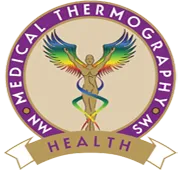|
If you choose to go with thermography, there are several factors that may contribute to a high risk (abnormal) thermogram. These factors include: hormonal imbalance, early angiogenesis (proliferation of blood vessels), lymphatic swellings, poor function and other contributing factors - all of these are important contributors to many diseases. They often go undetected by mammography or ultrasound as these factors do not appear as structural changes.
MRI:
- Safe and painless. MRI scanners do not use ionising radiation, which cuts the exposure of potential harm from the patient.
- The pictures created by MRI technology are precise and definte.
- Due to the extremely strong magnets used in the MRI scanner, metal is prohibited anywhere near the scanner. This means that patients with metal fragments inside their body cannot undergo an MRI. This includes people with pacemakers, artificial joints, dental fillings, braces, and more.
- In some cases, people with tattoos have difficulties with proceeding an MRI scan. Most older tattoo inks contain traces of metal can cause discomfort to the tattoo and surrounding skin.
- Since the machine is an enclosed space, it is extremely difficult for a patient with claustrophobia to undergo the scan. In order for a successful MRI scan, the patient must lie absolutely still.
- Costly procedure, ranges from $1,000 or more.
Mammography:
- Compresses the breast
- X-ray radiation produces an image; the area of concern must have greater density to stand out against regular tissue
- Can detect tumors in mainly slow growing stage or pre-invasive stage
- Cannot detect fast growing tumors in the pre-invasive stage
- The use of hormones decreases sensitivity
- Large, dense and fibrocystic breasts are difficult to read
- The upper portions of the breast including the tail of the breast and the Axillary region cannot be visualized
- Can detect tumors 1-2 years earlier than physical examination
- Average Specificity 75% (25% false-positive) 9 out of 10 biopsies initiated by mammography are negative
- Average Sensitivity 80% with 20% of cancers missed in women over age 50 in women under age 50 Sensitivity is 60% or 40% of cancers missed
Ultrasound
- Structural test, can pinpoint the location of suspicious area
- Uses sound waves with moderate contact
- High frequency sound waves are bounced off the breast tissue and collected as an echo to produce an image
- Able to detect some tumors missed by mammography
- No data available on detecting pre-invasive tumors
- May be affected by the hormonal influence due to the menstrual cycle, (i.e. cystic changes)
- All areas of the breast and Axillary region can be analyzed
- Good for distinguishing between solid and fluid masses, helpful in investigating an area of concern due to mammography, thermography or physical examination findings
- Average Specificity 66% (34% false positive)
- Average Sensitivity 83% (17% of cancers missed)
Thermography
- Functional testing, able to detect physiological changes, cannot pinpoint the exact location of suspicious area
- No radiation, non-invasive, no risk, can be used as often as necessary to observe the effectiveness of treatment over time
- Uses infrared detectors to detect heat and increased vascularity that may be related to angiogenesis
- Can detect physiological changes many years prior to any other method of screening
- Very sensitive to fast growing aggressive tumors
- Hormonal activity in the breast will affect thermographic imaging but not to the point of abnormality
- All breast shapes, conditions and areas are within the scope of imaging
- Earliest warning system with breast tissue and physiological changes that usually precedes tumor formation years prior to its occurrence
- Average Specificity 90% (10% false positive)
- Average Sensitivity 90% (10% cancers missed) most of these are slow growing tumors with low metabolic rate in the area with a high rate of survival
Cancer starts with one abnormal cell, and it takes around 8 years for that one abnormal cell to duplicate itself into one billion cells. One billion cells produce a detectable lump that is one centimeter in size. It is important that every woman knows her risk for breast cancer. With proper risk assessments that includes different testing modalities, you are then able to determine your risk factors and develop an action plan on how to improve the breast tissue or even reverse the effects through diet and lifestyle changes.
If you have not already like us on Facebook for more health information.
|
